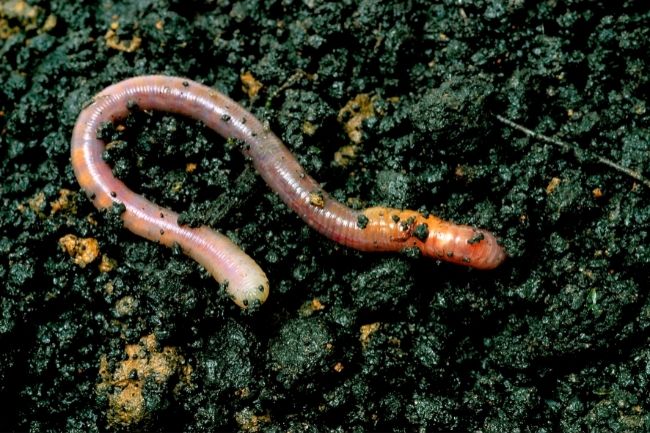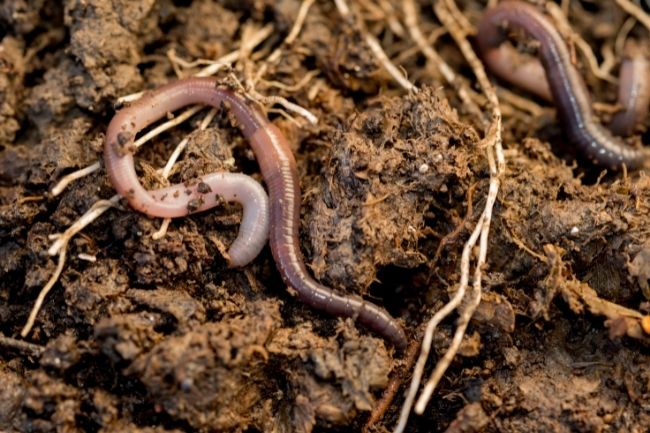Earthworms are excellent composters. They eat a wide variety of foods, from plant vegetation to animal waste, to fruits and vegetable scraps. Having digested this matter they release it as composted soil, which contains many minerals and nutrients that would otherwise have remained trapped and inaccessible.
Contents
What is composting?

Composting refers to the decomposing of organic matter into a type of rich soil. Composting occurs naturally within our environment, as matter breaks down over time, however, it is often referred to more readily when humans aim to compost materials, either for their disposal or with the purpose of utilising the resulting matter for soil improvement.
Any organic material can be composted, though some items take longer to break down than others. Grass cuttings, cardboard, eggshells, vegetable and fruit waste, and other plant matter, are some of the most common items to be composted.
| Component | Description |
|---|---|
| Organic Waste | Kitchen scraps, yard waste, and other plant-based materials that serve as the feedstock for composting. |
| Moisture | Adequate moisture is necessary to support the decomposition process and maintain the right conditions for earthworms. |
| Oxygen | Proper aeration allows for aerobic decomposition, facilitating the breakdown of organic matter. |
| Temperature | Composting works best within a certain temperature range, typically between 40 to 60 degrees Celsius. |
| Microorganisms | Naturally occurring bacteria, fungi, and other microorganisms that assist in breaking down organic matter. |
While meat can be composted, systems that compost meat are often designed to run at a higher temperature, in order to ensure that any potential bacteria is killed off. Meat and other processed foods can also attract in rats, so they tend to be disposed of at professional facilities.
Even human waste can be composted, and many eco-friendly sites have compost toilets. Here humans waste is mixed with sawdust, and over time becomes perfectly harmless and suitable even for use on garden beds.
In order for composting to occur, plenty of oxygen must be available to the compost heap. This allows the matter to break down. As part of the process, the compost heap will often heat up, making it a favourite spot for many heat-loving animals, such as the perfectly harmless slow worms.

So that the compost heap gets enough oxygen many people turn their heap. Another important aspect is to ensure the amount of green waste, such as grass cuttings, is around 40% of the heap, with the rest made up of brown waste such as twigs and cardboard.
Once ready, compost is an excellent resource. Its high levels of organic matter help it to hold on to water and nutrients. It can be used in gardening by adding to beds, or even on a larger scale in farming.
While compost fell out of fashion for the easier to acquire artificial fertilisers, today we are realising that these fertilisers are like fast food for the soil, giving it a quick hit but not helping to improve its condition in the long run. Compost and other more natural products like manure are now coming back into fashion. Not only for what they can provide for the soil, but also because they help bury carbon, aiding us in the fight against climate change.
Also read: Earthworms Eating Habits Explained
Worms in the compost heap

Worms are nature’s composters and can help to break down matter more quickly. While it is possible to buy worms to add to a compost heap, in general, there is no need as they will find their own way there. Dig through any compost heap and you will be likely to find hundreds and thousands of worms.
Worms are on the frontline of composting. They are able to break up larger matter that smaller soil organisms may struggle with. Once the worm has ‘shredded’ larger items, bacteria and other composters can get to work.
| Role | Description |
|---|---|
| Shredding and Mixing | Earthworms consume organic waste, break it down into smaller particles, and mix it with the bedding material. |
| Digestion and Excretion | Earthworms feed on organic matter, digest it, and excrete nutrient-rich castings (vermicompost) as waste. |
| Aeration | As earthworms move through the compost pile, they create tunnels, improving oxygen flow and aeration. |
| Microbial Enhancement | Earthworms enhance microbial activity in the compost, promoting the breakdown of organic matter. |
| Nutrient Enrichment | Earthworm castings are rich in nutrients, such as nitrogen, phosphorus, and potassium, benefiting plant growth. |
As well as actively munching away at your waste, worms also help with the aerating of the heap, tunnelling through and creating a better structure within the compost. This allows more oxygen to enter in helping bacteria and other microorganisms to do their job.
Even once the compost is ready to use the worms can be helpful, pulling the compost deep into the soil. No-dig methods of gardening take advantage of this process, with gardeners depositing a deep layer of compost on the surface of the soil and allowing the worms to carry it down. This method has the advantage that the natural soil structure is not disturbed, which can lead to it drying out and becoming compacted.
There are many different species of worms, and while all of them will act as natural composters, there tend to be certain species that particularly like living within compost heaps. These tend to be epigeic worm species, meaning worms that like to live close to the surface of the soil. These are the kind of species you often find when you lift a plant pot.
| Benefits | Description |
|---|---|
| Accelerated Decomposition | Earthworms speed up the composting process by increasing the breakdown of organic materials. |
| Nutrient Recycling | Earthworm castings contain valuable nutrients that can be reused in gardens and agricultural applications. |
| Soil Improvement | Vermicompost improves soil structure, enhances moisture retention, and enriches soil fertility. |
| Enhanced Microbial Activity | Earthworms introduce beneficial microorganisms into the compost, aiding in decomposition and nutrient cycling. |
| Environmental Sustainability | Composting with earthworms reduces waste sent to landfills, contributing to a more sustainable waste management system. |
Tiger worms are a species that particularly thrives in compost heaps. They are so named because they appear to have red stripes down their bodies. Because of the high levels of energy available within the compost heap, they are also more wiggly than your average worm. If you pick one up you’ll often find it thrashing wildly around on your palm, as it is so full of energy.
Also read: Here’s How Earthworms Breathe? (Without Lungs)
Welcome to the wormery
The idea of lots of wriggling, writhing worms may be thoroughly unappealing to some people, yet a wormery can be a great way to compost organic matter quickly and efficiently. Generally, these are sealed containers, filled with plenty of hungry worms, where food and other waste can be deposited.
Shelves within the container allow liquids and compost to be removed and be added to the garden. This compost is high in nitrates and potassium, so excellent for the garden. The liquid can be used as a feed, diluted with water before use.
For many people, wormeries can provide the benefits of a compost heap when they don’t have space for one. Wormeries can even be stored in the kitchen, as long as the idea of all those wiggly little houseguests doesn’t put you off.
In the end, worms are our friends when it comes to compost, we appreciate their help and they appreciate our waste. So even if they still aren’t your favourite creatures in the world, it really is worth keeping them around.

